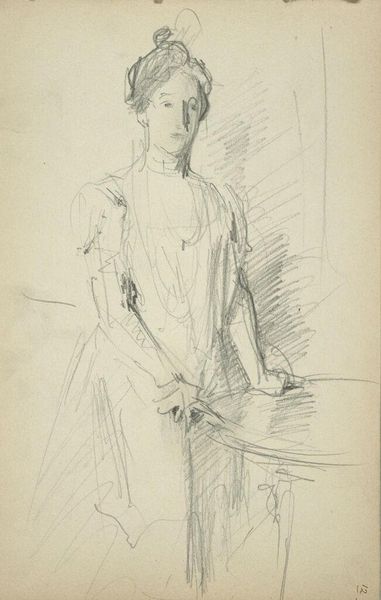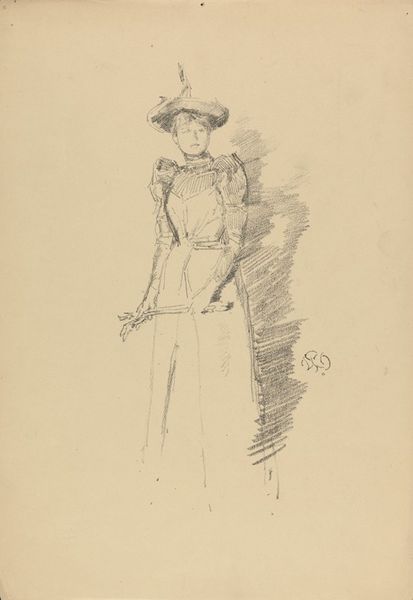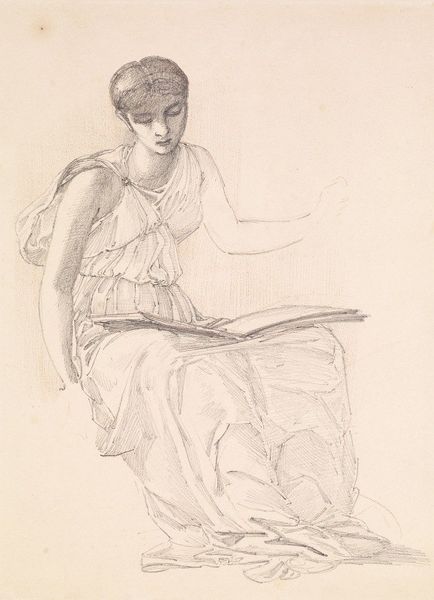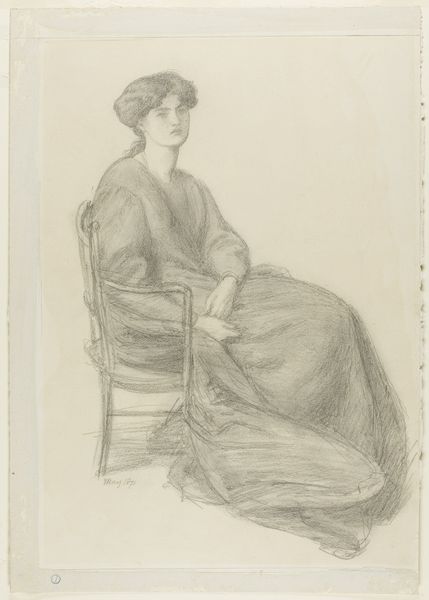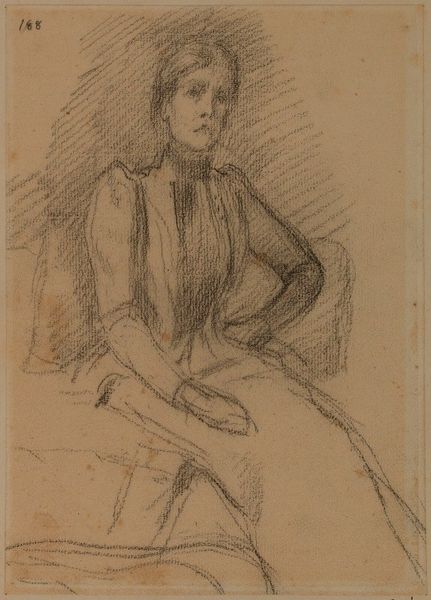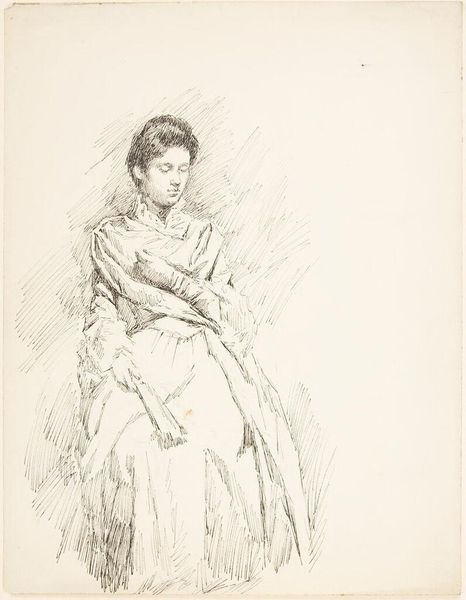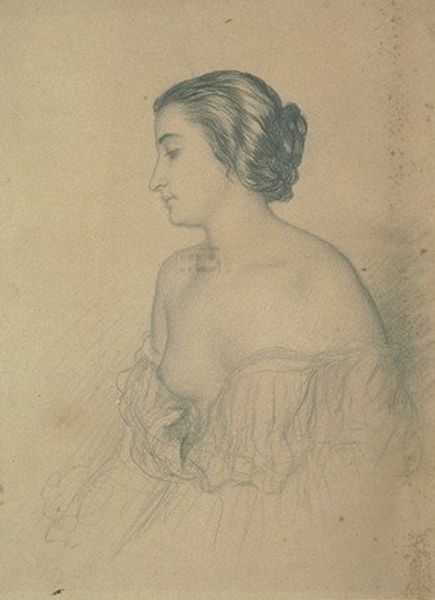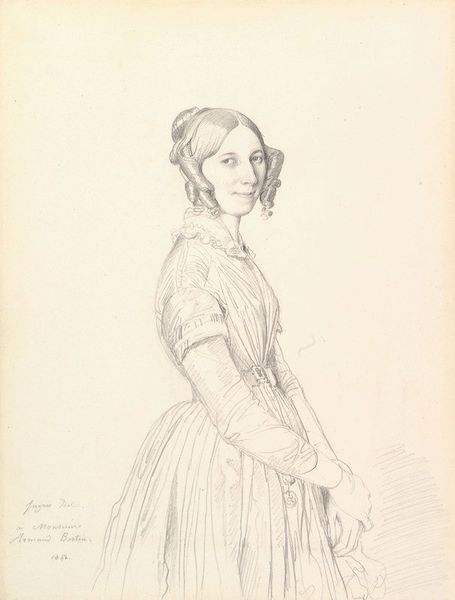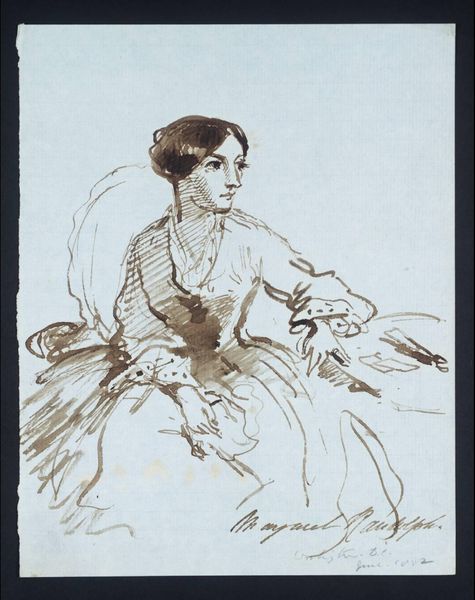
drawing, pencil
#
portrait
#
drawing
#
pencil sketch
#
pencil
#
portrait drawing
#
academic-art
#
realism
Copyright: Public Domain: Artvee
Curator: What a delightful surprise this sketch is! There's an unmistakable air of wistful remembrance around this particular portrait by Carolus-Duran. It’s named “Sketch of a Lady,” and judging by its style, dates back to 1994. Editor: My first thought? There’s a real sense of someone turning away, almost fleeing, from our gaze. The rapid pencil strokes make her seem ephemeral, as if she could vanish in a moment. I feel the patriarchy staring. Curator: I get that, truly! It’s like a captured fleeting moment, an attempt to preserve a fading memory on paper. Duran's realism captures her averted gaze—there's a story hinted at that she isn’t quite willing to tell. Her body faces towards us while the subtle angle of her head expresses emotional withdrawal or quiet defiance. Editor: Quiet defiance—yes! And what does it mean for a female figure to be "preserved" like this? In what circumstances was it drawn? There is a distinct possibility of the woman’s subjectivation. Considering the power dynamics at play between artist and subject is imperative. Curator: An excellent point. Perhaps Duran intended to show a sense of the lady's inner strength amidst constraints? She's depicted with a gentleness, softened by the strokes of the pencil, almost romanticized. But you’re right—that could also speak to art's complex role in solidifying societal perceptions, or, worse, solidifying misogynistic tropes in visual culture. Editor: Exactly! Think of her gaze and what that communicates. Was she looking at someone we can't see, and if so, is that by accident? The off-the-shoulder sleeves, tight waist and elegant train point to class and its relationship with power and art. She isn’t completely revealing herself, maintaining agency even within the artistic capture. We must challenge the romanticization of such unequal encounters, the canon of beautiful “ladies” passively awaiting the male gaze. Curator: True—art serves as both a mirror reflecting societal norms and a catalyst questioning them. Looking closer, there's almost an incomplete quality as if she is caught between states of existing, her narrative purposefully fractured to leave space for questioning, as if inviting the viewers to speculate the rest of her being. It speaks volumes despite its minimalist execution and subdued tones, and ultimately its interpretation relies greatly on each of us who get to experience the work. Editor: Precisely. Engaging with art demands a critical examination of the powers it holds. That’s why I cherish these reminders: they prompt much needed discussions of women, class and power. The gaze continues...
Comments
No comments
Be the first to comment and join the conversation on the ultimate creative platform.
